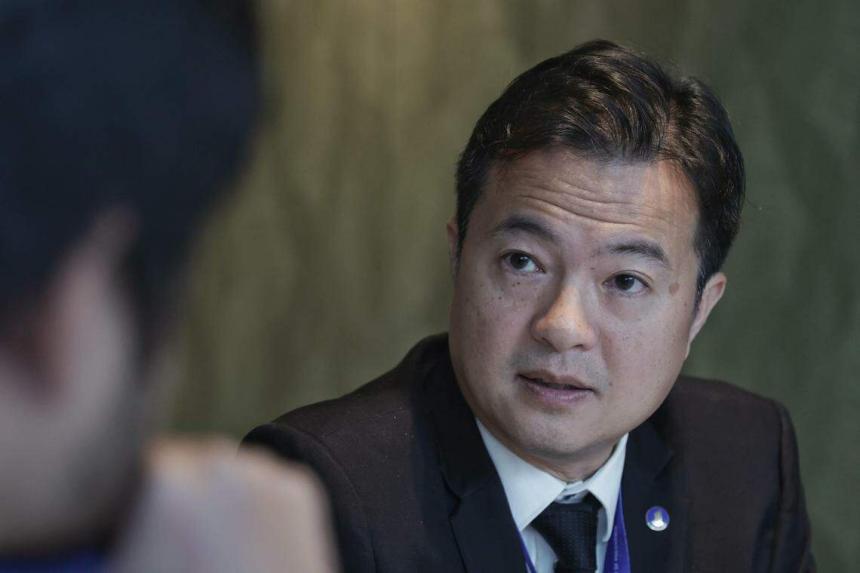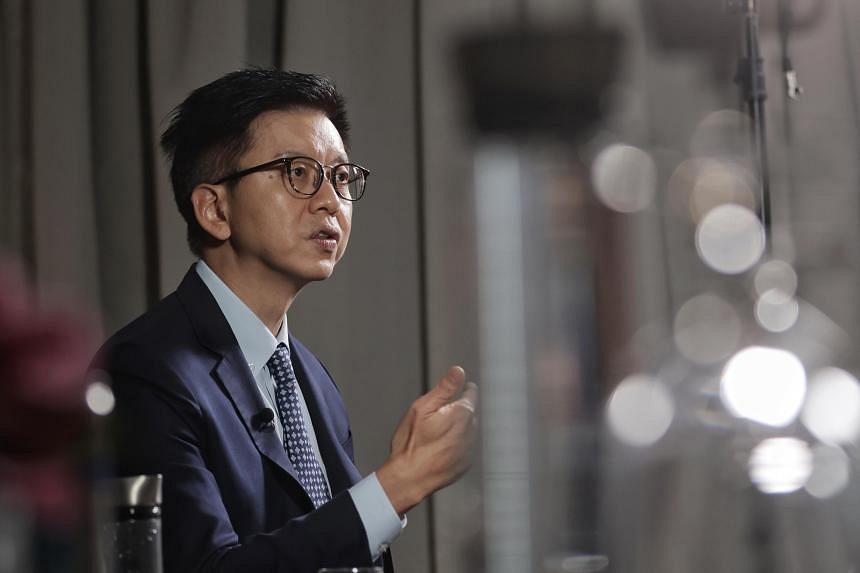SINGAPORE - There is a lot that Cathay Pacific can learn from its “respected competitor” Singapore Airlines (SIA), said the carrier’s chief executive, as the Hong Kong-based airline continues to make up ground against its rivals after a late start to its Covid-19 recovery.
Speaking to reporters on the sidelines of a summit for Asia-Pacific airlines in Singapore last Friday, Cathay Pacific chief Ronald Lam described the dynamic between the two flag carriers as “constructive, healthy competition that will drive improvement on both sides”.
He said: “(SIA) is a world-class airline… and we believe we are one of those as well. We had our challenges before and during Covid-19, and now we are catching up.”
One of the hardest-hit airlines during the pandemic, Cathay Pacific has since restored about 70 per cent of its passenger flight capacity ahead of schedule following the lifting of travel curbs by the territory in December 2022.
Mr Lam said Singapore is an important city for the carrier, and Cathay Pacific now operates eight flights a day between Hong Kong and the Republic, which is close to pre-pandemic levels.
The airline’s next target is a full recovery by the end of 2024, which is not far off SIA’s projection of returning to full capacity sometime between April 2024 and March 2025.
SIA chief executive Goh Choon Phong said in a separate interview that even if some of its competitors in the region are slow in restoring capacity, the national carrier cannot take them for granted.
“I think we have to take them very seriously as they recover,” he said.
While competition between airlines in the region continues to hot up, airline chiefs at Friday’s meeting flagged other concerns.
Mr Lam said Cathay Pacific’s biggest bottleneck now is the training of pilots, cabin crew and ground staff, as it looks to hire another 5,000 workers across the airline group in 2024.
“We have been working hard on that, including potentially doing some of the training with our partners in Singapore, for example,” he added.
Meanwhile, ongoing supply chain snags that have hit aircraft and engine-makers, as well as spare parts manufacturers, are a “post-Covid-19 hangover” that the airline industry needs to address.
“Cathay is not alone,” Mr Lam said. “All the fellow airlines are saying that they face global supply chain issues when it comes to availability of spare parts and also inflation.”
During a panel discussion, Thai Airways chief executive Chai Eamsiri pointed to difficulties retrofitting older planes and maintaining equipment such as water taps with electronic sensors in aircraft toilets.
“We are thinking of going back to the old days and using mechanical taps... more reliable and easy to maintain,” he said.
Scoot chief executive Leslie Thng said the budget carrier, like all other low-cost airlines, also has to face external challenges such as high interest rates, inflation and supply chain constraints.

But he believes the airline is in a good position, thanks to the foundations it has built post-pandemic.
He noted that Scoot’s flight capacity has, for instance, already exceeded pre-pandemic levels by 3 per cent to 4 per cent when comparing the period between April and September with the same period in 2019.
As at Nov 10, Scoot has also restored more than 90 per cent of its pre-Covid-19 network, with a total of 66 destinations in Asia, Australia, Europe and the Middle East.
Expansion is now on the cards, and one of the “growth engines” is the nine 112-seat Embraer E190-E2 jets that will be delivered to Scoot by the end of 2025, which will allow the airline to serve thinner and less popular routes in South-east Asia. Five of these planes will be delivered in 2024, with the first plane to arrive sometime in March.
Mr Thng said: “In the short term, our focus will be using (the E2s) to continue to increase the number of destinations that we can offer within this region.”
According to Scoot’s plans, training for the first batch of pilots for the Embraer aircraft will begin as early as the end of December or the beginning of 2024. The Brazilian aircraft maker has brought a flight simulator to Singapore, which is being assembled at SIA’s training centre in Changi.
Mr Thng said: “There is a whole series of activities that Scoot is undertaking internally to make sure that by the time the E2 is delivered to Scoot sometime in March next year, we will be ready to operate the aircraft.”
On the other hand, China remains a potential stumbling block amid sluggish demand and challenges with securing take-off and landing slots.
Mr Thng said the country is an important market as it formed about 25 per cent of the airline’s capacity pre-Covid-19.
“For China, we are only at about 80 per cent (capacity), so there is still 20 per cent that we want to reinstate,” he said.
Scoot will resume services to Changsha and Kunming from Nov 26, but its Kunming flights are available for sale only until Jan 28, and its flights to Changsha only until March 29. There are also no immediate plans to resume flights to Wuxi and Harbin, which Scoot used to operate.
When asked about this, Mr Thng said he believes in the Chinese market, and expects demand to return.
“We also respect the local processes that foreign airlines would have to follow,” he added.
For Cathay Pacific, rebuilding connectivity with China is a key focus in the coming year, especially with the planned opening of a third runway at Hong Kong International Airport at end-2024.
Calling it a major milestone for Hong Kong aviation, Mr Lam said the third runway will herald a “new era” of growth and development for the territory’s air hub.
He said there is already “huge” travel demand from the nine cities that make up the Greater Bay Area in China, which Cathay Pacific sees as an extended home market.
“Competition is going to be there all the time, but I’m confident that there’s enough demand,” Mr Lam added.


